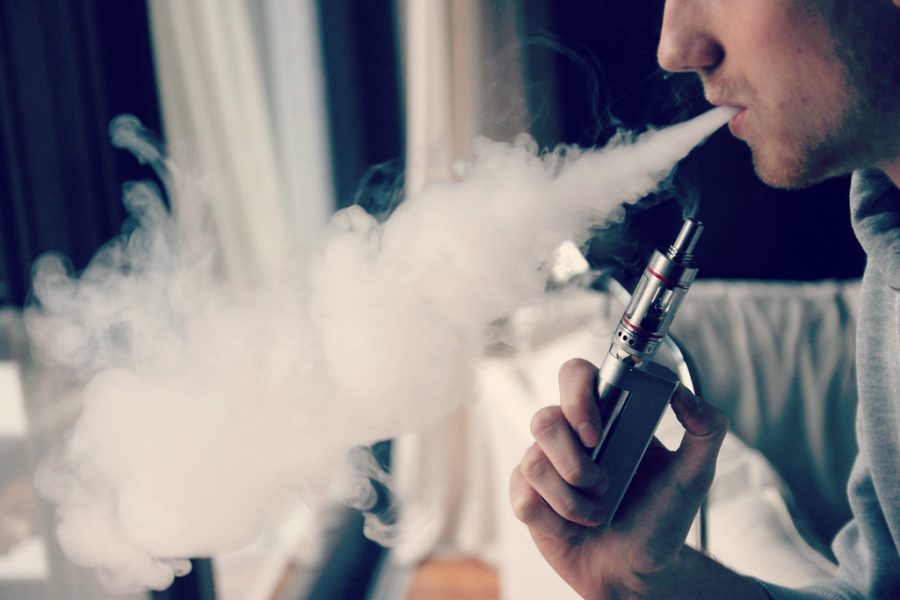The vaping crisis worsens
Exhaling a cloud of water vapor, a man demonstrates using an e-cigarette for recreation. Although the use of vapes is marketed as a way to quit smoking, the flavors of nicotine juice have drawn the attention of young people, some of whom are now experiencing health issues from the chemicals in said juice.
November 18, 2019
E-cigarettes and vaporizers, or vapes as they are more commonly known, entered the market as a healthier alternative to smoking cigarettes. But instead of being used as a way to help adults who were already addicted, they became popular among young people, especially minors. The fun fruit flavors entice high school students, who cannot legally buy tobacco products, and the effects are beginning to come to light.
Because vapes are so new to the market, there is not a lot of research regarding what the potential health effects may be. Health organizations say they are not even sure what chemicals are being used in the flavored nicotine juices, which poses a large risk to users of the devices. Research from Johns Hopkins Medicine implies that vaping is healthier for you than smoking traditional cigarettes, yet are still harmful to your health. Nicotine is found in both traditional and e-cigarettes, and is an extremely addictive substance that causes the user to crave more and more, as well as experience withdrawal when they ignore these cravings.
Vapes are also cheaper than traditional cigarettes, which makes them even more appealing to both young people and adults trying to quit. Vapes have caused the younger generation, who likely would have never smoked cigarettes to begin with, to get hooked on nicotine. On this subject, senior Bryce Washington commented, “Smoking anything is sort of a cultural staple in America that likely will not die out of nowhere.” Teenagers and young adults perceive vapes to be healthier alternatives to smoking; they taste like vaporized candy from their childhood and are relatively cheap. With this message being marketed to them by Juul and other popular e-cigarette companies, teens find it hard not to give in, especially when all their friends are doing it too; then, it becomes an issue of peer pressure.
Eighty-four percent of the vaping-related deaths in the last six months were caused by vapes with pre-filled cartridges that contained THC, not nicotine. These dab pens, as they are commonly known, are not regulated and are mainly purchased from informal sources, which means the substances in these cartridges are untrustworthy. There have been incidents where cartridges were filled with pesticide to supplement the THC in an effort for the vendor to save money. Needless to say, inhaling pesticides is very dangerous and can lead to serious health risks, illnesses, and can result in death in extreme cases. Thirty-nine people have died in the US from vaping-related illnesses in 2019.
Despite being a healthier alternative to smoking traditional cigarettes, vaping is still harmful to the body, and many of the effects are not yet known. THC vaporizers are among the deadliest and most dangerous, although nicotine vapes can still negatively affect one’s health. A majority of those experiencing vaping-related illnesses are young people because of how appealing vapes are compared to traditional cigarettes. As a result of this, the Trump administration proposed a ban on all non-tobacco flavors for e-cigarettes, but it has been met with backlash from vape store owners. It is still uncertain whether the ban will be put into effect.













